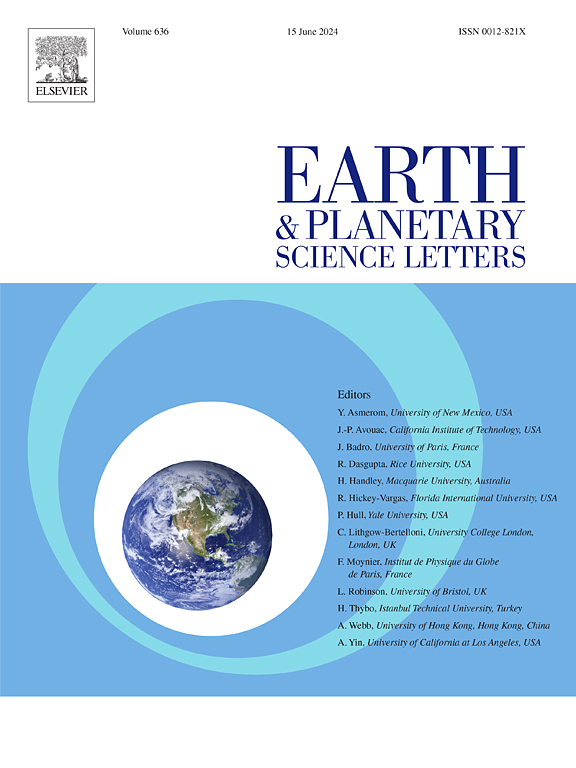Crustal deformation across the southeastern flank of the eastern Himalayan syntaxis from 3D velocity and anisotropic structures
IF 4.8
1区 地球科学
Q1 GEOCHEMISTRY & GEOPHYSICS
引用次数: 0
Abstract
The southeastern flank of the Eastern Himalayan Syntaxis (EHS) hosts both Tibetan Plateau extrusion and Indian Plate subduction and is a key location for understanding the tectonic transition from continental collision to plateau uplift and lateral extrusion. In this study, we used the densest broadband seismic arrays ever to extract dispersion curves for group and phase velocities with periods ranging from 3 to 40 s. The high-resolution 3-D radially and azimuthally anisotropic model obtained from ambient noise tomography provides valuable insights into interpreting crustal deformation. Our results reveal the differences in deformation mechanisms between tectonic plates on both sides of the Jinshajiang Fault-Red River Fault (JSJF-RRF) system. The Sichuan-Yunnan block on the eastern side exhibits positive radial anisotropy in the low-velocity weak layers of the mid-lower crust. Large-scale continuous crustal flow does not exist under the blocking of multiple fractures and high-velocity bodies, but rather localized material flow occurs due to partial melting. On the western side, the Indo-China Block (ICB) and the Yunnan-Myanmar-Thailand Block (YMTB) are distributed in complex depth‐variant anisotropy patterns. We consider this to be the combined result of clockwise rotation and extension, followed by asthenospheric upwelling and lateral crustal shortening during oblique eastward subduction of the Indian lithosphere, which further heated the lower crust. Additionally, the extension and deformation of mid-crustal melt on southeastern EHS significantly influence earthquake preparation and occurrence.
求助全文
约1分钟内获得全文
求助全文
来源期刊

Earth and Planetary Science Letters
地学-地球化学与地球物理
CiteScore
10.30
自引率
5.70%
发文量
475
审稿时长
2.8 months
期刊介绍:
Earth and Planetary Science Letters (EPSL) is a leading journal for researchers across the entire Earth and planetary sciences community. It publishes concise, exciting, high-impact articles ("Letters") of broad interest. Its focus is on physical and chemical processes, the evolution and general properties of the Earth and planets - from their deep interiors to their atmospheres. EPSL also includes a Frontiers section, featuring invited high-profile synthesis articles by leading experts on timely topics to bring cutting-edge research to the wider community.
 求助内容:
求助内容: 应助结果提醒方式:
应助结果提醒方式:


